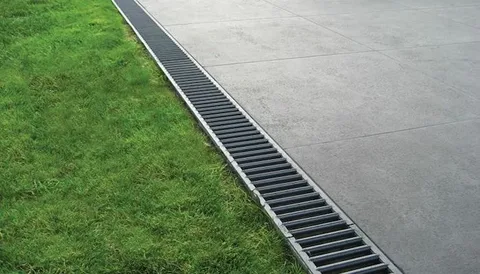Outdoor surfaces are an essential part of our daily environments—whether it’s a commercial parking lot, a city sidewalk, or the driveway outside your home. But one often-overlooked element that can make or break the lifespan of these surfaces is drainage.
Proper drainage isn’t just a matter of convenience. It directly impacts the safety, durability, and maintenance costs of any paved area. Without the right drainage systems in place, water can quickly become a destructive force.
Table of Contents
Why Drainage Matters So Much
Water may seem harmless, but when it has nowhere to go, it can:
- Pool on the surface, causing slipperiness and accidents.
- Seep into tiny cracks, freeze in cold weather, and expand—widening the cracks.
- Erode the underlying foundation, compromising the structural integrity.
- Encourage algae and mold growth that makes surfaces unsightly and unsafe.
These issues aren’t just a visual nuisance—they’re expensive problems that could have been avoided with proactive design and planning. In fact, surface failure caused by improper drainage is one of the leading reasons property owners seek surface repair services.
Real-World Examples of Drainage Failure
Consider a retail shopping center that sees hundreds of vehicles each day. If water isn’t properly channeled away, those constant weight loads combined with moisture can cause the asphalt to buckle or sink. This leads to dangerous potholes and trip hazards, which may also open up a property owner to liability if someone gets injured.
Or imagine a warehouse with a delivery zone that experiences heavy rain runoff. If the drainage is poor, trucks backing up may splash through standing water daily. Over time, the constant water exposure can eat away at the surface, weakening it and shortening its lifespan.
Poor drainage can also result in flooding during storms, which may damage the building foundation or force temporary business closures.
The Role of Design in Drainage
When engineers and contractors plan out a project, drainage should be part of the earliest conversations, not an afterthought. That includes:
- Grading the surface so that water naturally flows away from structures
- Installing storm drains or trench drains at key collection points
- Using permeable materials when possible to allow water to seep into the ground safely
Even small slope miscalculations can lead to big puddling problems, especially in areas with frequent rainfall or freeze-thaw cycles. A drainage plan is not just about installing a few pipes—it’s a comprehensive strategy that takes site layout, expected traffic, and climate into account.
Preventive Maintenance Is Key
Even with a great initial design, things can go wrong over time:
- Drainage systems can clog with debris
- Sediment can build up in pipes or trench drains
- Tree roots can interfere with flow paths
That’s why regular inspection and maintenance are just as critical as the initial installation. Property owners should be proactive in checking drains and clearing out any blockages before storm season or winter hits. A once-a-year maintenance check can significantly extend the life of your outdoor surfaces.
Signs Your Drainage System May Be Failing
You don’t have to be a contractor to spot early warning signs. Look for:
- Water pools in low areas after rain
- Cracking or buckling in asphalt or concrete
- Mold or algae stains on the surface
- Unpleasant odors near drains (which can signal a buildup)
You might also notice puddles forming in places that used to drain properly—this is often a sign of a blockage or a collapsed drainpipe. These are problems that shouldn’t be ignored. Addressing them early can save thousands of dollars down the road in repairs and liability costs.
How Drainage Affects Asphalt Surfaces Specifically
Asphalt is a common material for driveways and parking lots due to its flexibility and affordability. But it’s also highly sensitive to water. Even small amounts of water infiltration can cause soft spots, ruts, and surface deterioration over time.
That’s where asphalt repair becomes essential. By regularly inspecting asphalt surfaces and making timely repairs, property owners can prevent small drainage issues from becoming major structural failures. A repaired surface not only looks better but also restores full functionality and safety for vehicles and pedestrians alike.
Benefits of Getting It Right the First Time
There’s a reason drainage is considered a foundational element in construction:
- It protects your investment
It lowers long-term maintenance costs - It improves usability and aesthetics
- It reduces safety risks for pedestrians and drivers
A well-drained surface simply performs better. It’s easier to maintain, lasts longer, and requires fewer costly repairs. It also reduces downtime and prevents costly liability claims.
Expert Help Can Make All the Difference
Designing an effective drainage system and maintaining outdoor surfaces is not a DIY job. Partnering with experts who specialize in paving and asphalt repair ensures your property gets the attention it deserves.
These professionals have the tools and knowledge to assess your site’s water flow, suggest improvements, and implement repairs quickly and effectively.








